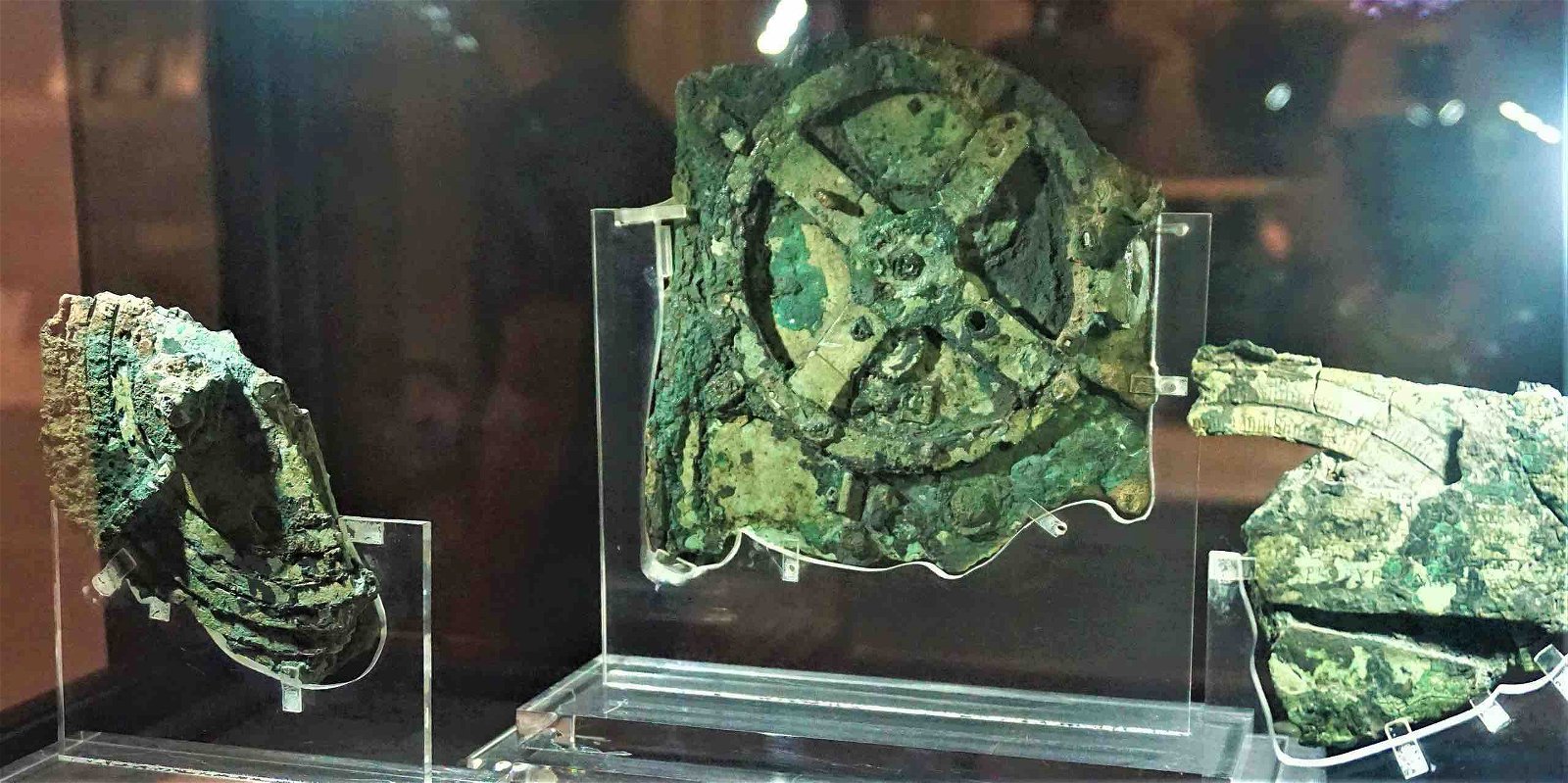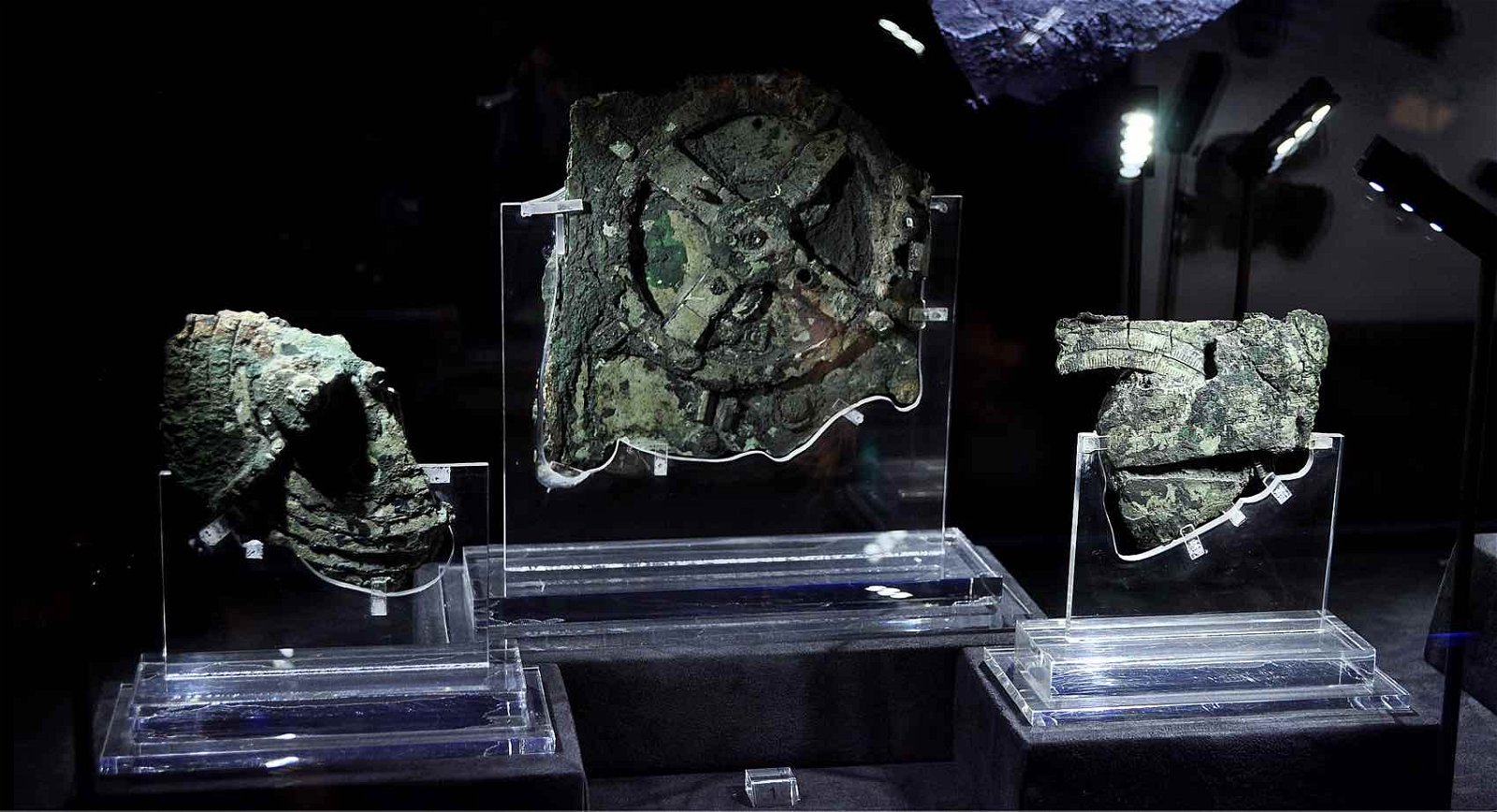New insights into the function of the world’s oldest analog computer, the famous Antikythera mechanism, have been made with help from an unlikely source: technology developed for the study of gravitational waves.
The Antikythera mechanism is regarded as the world’s oldest known analog computing device. An example of precocious “lost” ancient technology, the early science instrument dates back more than 2000 years and was used by astronomers to predict the positions of celestial objects by as much as decades.
Originally discovered among the wreckage of a shipwreck along the Greek island of Antikythera in 1901, the mysterious mechanism has long intrigued modern scientists and engineers, primarily because it appears to be a singular invention, with no other similar devices from this period known to exist.
Now, researchers with the University of Glasgow have employed statistical modeling techniques originally developed for analyzing ripples in spacetime to determine how many holes likely existed in one of the famous Antikythera mechanism’s broken rings.
At the time of its discovery, the Antikythera mechanism was in a highly eroded state, having spent close to two thousand years amidst the wreckage of a ship that sank near the Aegean Island of Antikythera, the device’s namesake.
Roughly the size of a shoebox, the device features an array of intricately tooled gears that are surprisingly complex for any innovation from the second century BCE. Over the decades, studies of the device have revealed that it likely functioned as a hand-operated computer that would have allowed its operator to predict the arrival of eclipses, as well as calculate the positions of planets over time.


Fast forward to 2020, when X-ray images of one of the device’s components, which researchers identify as its calendar ring, unveiled new features that included a series of regularly spaced holes beneath the ring. Given its highly eroded state, the presence of rings could be discerned, although the number remained unclear, with estimates suggesting anywhere between 347 and 467 of the holes having once existed along this damaged portion of the device.
Now, in new research published in the Horological Journal, Glasgow researchers outline their use of a pair of statistical techniques in a new effort to refine the previously estimated number of holes that once existed in this region of the Antikythera mechanism. Applying Bayesian analysis and, notably, new techniques from gravitational wave research, the team determined that the ring likely contained 354 holes.
This is significant since the 354 holes on the device would have perfectly aligned with the Greek lunar calendar, as opposed to the Egyptian calendar’s 365 holes. Based on the new analysis, the presence of 354 holes is hundreds of times more probable than the previously considered 360-hole count.
Professor Graham Woan, a co-author of the paper, explained that he became interested in the problem after being introduced to data by YouTuber Chris Budiselic, who was creating a replica of the calendar ring.
“Towards the end of last year, a colleague pointed to me to data acquired by YouTuber Chris Budiselic, who was looking to make a replica of the calendar ring and was investigating ways to determine just how many holes it contained.”
Woan said Budiselic’s conundrum “struck me as an interesting problem, and one that I thought I might be able to solve in a different way during the Christmas holidays.” Woan then went to work employing statistical techniques to see if a definitive answer could be obtained.
Dr. Joseph Bayley, a colleague of Woan’s at the University’s Institute for Gravitational Research, further refined the research by adapting techniques used in analyzing LIGO gravitational wave data to study the calendar ring. Their combined approaches, including Markov Chain Monte Carlo and nested sampling, confirmed the probability of 354 or 355 holes with a precision of about 1/3 mm.
Additionally, the new analysis also reveals the extraordinary accuracy of the holes’ placement, with an average radial variation of just 0.028mm. According to Bayley, the use of these dual approaches to resolving the lingering questions about the Antikythera mechanism showcases the truly remarkable skill employed by the device’s mysterious builder(s).
“It’s given me a new appreciation for the Antikythera mechanism and the work and care that Greek craftspeople put into making it,” Bayley said. “[T]he precision of the holes’ positioning would have required highly accurate measurement techniques and an incredibly steady hand to punch them.”
Professor Woan says using contemporary techniques to study an ancient device designed to track celestial events will enhance the research community’s appreciation of ancient technological achievements like the Antikythera mechanism, which represents a singularly unique and innovative construction.
“We hope that our findings about the Antikythera mechanism, although less supernaturally spectacular than those made by Indiana Jones, will help deepen our understanding of how this remarkable device was made and used by the Greeks,” Woan said in a statement.
Woan and Bayley’s study, “An Improved Calendar Ring Hole-Count for the Antikythera Mechanism,” appeared in the July 2024 issue of The Horological Journal.
Micah Hanks is the Editor-in-Chief and Co-Founder of The Debrief. He can be reached by email at micah@thedebrief.org. Follow his work at micahhanks.com and on X: @MicahHanks.

